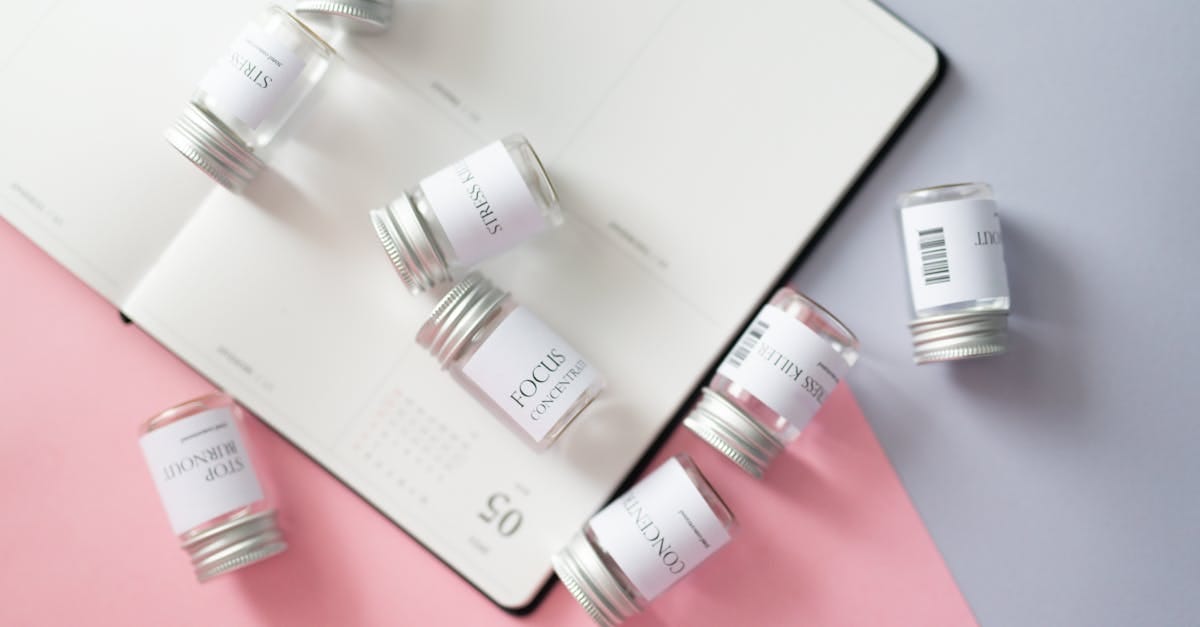This article explores the essential connection between color and space in achieving visual balance in design. It emphasizes that the right use of color can enhance the perception of space while establishing harmony within a room. Different color schemes, such as complementary and analogous colors, are discussed, showcasing how they can influence mood and energy levels. Additionally, the article highlights the significance of negative space in directing attention and creating a polished look. Employing strategies like color anchoring and thoughtful placement will aid in crafting spaces that feel both cohesive and inviting.
Current Trends in House Painting and Remodeling
As homeowners seek to enhance their living spaces, the realms of house painting and remodeling become vital avenues for creating a more inviting atmosphere. With a myriad of choices available, from vibrant color palettes to innovative remodeling techniques, it can be overwhelming to determine what suits your style and needs best. By understanding the latest trends in the industry, homeowners can make informed decisions that not only elevate the aesthetic appeal of their homes but also reflect their personality.
Today’s trends prioritize both functionality and aesthetics, focusing on sustainable materials and eco-friendly paints that benefit both the environment and indoor air quality. Popular choices such as muted earthy tones and bright accent colors are becoming favorites among designers and homeowners alike. Additionally, modern techniques like ombre painting and the integration of texture through wallpaper or faux finishes are trending, helping to create spaces that are both chic and comfortable.

| Feature | Details |
|---|---|
| Color Palette | A well-defined color palette enhances cohesiveness and harmony in space. |
| Space Utilization | Effective use of space enhances the perception of color, making it feel more inviting. |
| Contrast Creation | Using contrasting colors can create depth and dimension within a space. |
| Neutral Balance | Incorporating neutral colors helps in grounding vibrant color selections, providing balance. |
| Room Functionality | The color choice should reflect the function of the room, influencing mood and usability. |
| Lighting Impact | Natural and artificial lighting can significantly alter the perception of color in a space. |
| Color as a Neutral | Utilizing colors like navy blue or dark green can serve as a neutral base to build upon. |
| Flow of Color | Maintaining a consistent color flow throughout multiple rooms creates a sense of continuity. |
«`html
Current Trends in House Painting and Remodeling
Staying updated with current trends in house painting and remodeling can significantly enhance the appeal and functionality of a home. This article provides insights into popular color palettes, innovative materials, and modern techniques that are redefining interior and exterior spaces.
Popular Color Trends for 2023
The right color palette can create a lasting impression in every room. This year, homeowners are leaning towards various shades that foster warmth and balance.
- Earth Tones: Shades of greens, browns, and tans are becoming increasingly popular as they evoke a sense of calm and connection to nature. Both Benjamin Moore’s Coffeehouse Tan and Swiss Coffee are great examples that can set a cozy foundation for other hues.
- Soft Pastels: Light blues, greens, and blush pinks are being used to create serene environments. They pair well with both modern and traditional décor, adding a gentle touch to spaces.
- Bold Accent Colors: While neutral colors dominate the walls, bold shades like deep blues and emerald greens are used as statement pieces in furniture or accent walls. Incorporating these rich colors can breathe life into a dull space.
Innovative Painting Techniques
Techniques in painting have evolved, offering numerous creative possibilities to enhance the home. Here are some notable methods:
- Whitewashed Wood Techniques: This technique adds a rustic charm to wooden surfaces. By applying a diluted white paint, homeowners can bring a light, airy feel to their spaces while preserving the natural texture of the wood. To learn more about this approach, visit whitewashed wood techniques.
- Ombre Walls: This gradual blending of colors creates a soothing effect reminiscent of sunrise and sunset. It’s an ideal way to add depth to a room visually.
- Geometric Patterns: Painting shapes and patterns onto walls creates an engaging focal point. This contemporary approach can transform ordinary walls into unique pieces of art.
Materials Shaping the Remodeling Landscape
The remodeling sector is highlighted by the integration of innovative materials that provide durability, aesthetics, and sustainability.
- Sustainable Paints: Brands are increasingly offering eco-friendly options that reduce environmental impact while maintaining vibrant colors and finishes. These low-VOC (volatile organic compound) paints ensure a healthier indoor environment.
- Textured Finishes: Incorporating textures, such as stucco or plaster, can add character and warmth. The tactile difference creates depth and attracts the eye.
- Smart Home Features: Remodeling also includes integrating smart technology, such as smart lighting that adjusts color and intensity according to the time of day, enhancing any paint color’s vibrancy and functionality.
Outdoor Painting Trends
The exterior of a home deserves equal attention. The right paint choices extend beyond aesthetics; they also affect energy efficiency and longevity. Key trends include:
- Dark Exteriors: Deep shades like charcoal and navy blue are making a comeback. They not only provide a sleek, modern look but also create an illusion of a larger space.
- Color Pop Accents: Adding vibrant colors to doors, shutters, and window frames can significantly elevate the overall look of a home. Bright yellows or reds paired with neutral body colors can create a striking contrast.
- Durable Finishes: Modern advancements have led to exterior paints that offer better protection against weather elements while requiring less maintenance. Choosing high-quality paints ensures that homes look refreshed and withstand the test of time.
Maximizing Energy Efficiency Through Color Choice
Colors significantly influence how a home interacts with its environment. Lighter colors reflect heat, while darker hues absorb it. Understanding this can guide homeowners in making informed decisions that enhance energy efficiency.
- Cool Roofs: Light-colored roofing materials can reduce energy costs by reflecting solar heat. Homeowners can consider light shade options when selecting roofing materials and paint colors.
- Interior Color Reflection: Selecting lighter colors for interior walls can create an illusion of spaciousness and improve natural light reflection, reducing the need for artificial lighting.
- Color Schemes for Comfort: Colors should not only look good but also promote comfort and efficiency. Soft blues and greens in living spaces can help create a calming environment conducive to relaxation.
Tips for Choosing the Right Paint Finish
The finish applied to paint can dramatically change a room’s aesthetics and durability. Choosing the right finish is crucial to achieving desired results:
- Matte Finishes: Ideal for low-traffic areas, matte finishes provide a soft look and hide wall imperfections.
- Eggshell and Satin Finishes: These are commonly used in living spaces and bedrooms. They offer a little shine and are easier to clean than matte finishes, making them perfect for family homes.
- Gloss Finishes: Perfect for high-traffic areas and trim, gloss finishes reflect more light and are highly durable. This can be especially beneficial in kitchens and bathrooms.
Creating Flow Between Spaces
A cohesive design throughout a home often hinges on color choice and application. Homeowners should aim for a seamless flow between different areas of the house. This can be accomplished through several strategies:
- Consistent Color Palettes: Repeating colors in adjacent rooms creates a sense of harmony and continuity.
- Use of Accents: Similar accent colors or features in different rooms help tie spaces together, creating a unified home aesthetic.
- Spatial Awareness: Understanding how light interacts with different hues throughout the day can guide choices that enhance the overall ambiance of connected spaces.
Bringing it All Together
With the numerous options available, homeowners can embrace their creativity while ensuring their choices reflect their personal style and the functionality desired in their home. By focusing on trending colors, innovative techniques, and sustainable materials, every remodeling project can transform living spaces into beautiful, efficient havens.
For additional insights on color choices that enhance energy efficiency, check out our source on paint and energy efficiency.

Transform Your Space Today!
Discover how our painting and remodeling services can enhance your home and bring your vision to life. With a focus on quality and attention to detail, our expert team is here to help create a space you’ll love. Contact us for a personalized consultation and let us make your dream home a reality!
Current Trends in House Painting and Renovation
Popular Color Schemes
- Neutral Palettes: Shades like Benjamin Moore Swiss Coffee and Coffeehouse Tan create a calm and inviting atmosphere.
- Bold Accents: Incorporate bold colors such as navy blue and cognac brown for a striking contrast against neutral backgrounds.
- Earthy Tones: Utilize colors inspired by nature, including greens and browns that help integrate indoor spaces with the outdoor environment.
Innovative Techniques
- Color Blocking: Apply contrasting shades in bold blocks for a dramatic effect that highlights architectural features.
- Textured Finishes: Use matte or eggshell finishes to enhance depth and interest in wall treatments.
- Wallpaper Accents: Consider wallpaper to introduce color and pattern without overwhelming the space.
Space and Balance Strategies
- Positive and Negative Space: Use both aspects effectively to create equilibrium within the design, ensuring elements have enough breathing room.
- Whitespace Management: Implement whitespace to provide clarity and organize the flow of the space, making it feel less cluttered.
- Active vs. Passive Space: Integrate elements that guide the viewer’s eye and balance them with areas of calm.
Current Trends in Materials and Accessories
- Sustainable Materials: Opt for eco-friendly paints and materials that minimize environmental impact.
- Smart Technology: Incorporate smart home features seamlessly into renovations, enhancing convenience as well as aesthetics.
- Mixing Textures: Combine different materials such as wood, metal, and fabric to add dimensions and interests to the design.
Frequently asked questions
Glossary of Key Terms Related to Home Painting and Remodeling Trends
- Acrylic Paint
- A water-based paint that is versatile, dries quickly, and is easy to clean, making it popular for interior and exterior applications.
- Color Palette
- A selection of colors chosen for a project that harmoniously interact and create a specific mood or theme in a space.
- Accent Wall
- A single wall painted in a different color or pattern to create a focal point and add depth to a room.
- Texture
- The surface quality of a material, which can be either visual or tactile, impacting the overall aesthetic of a space.
- Neutral Colors
- Colors like white, gray, beige, and taupe that provide a calm backdrop, allowing other colors to stand out without overwhelming the space.
- Finishing Techniques
- Methods used to apply paint or other materials that add visual interest, such as glazing, stippling, or sponging.
- Eco-Friendly Paint
- A type of paint formulated to have low VOCs (volatile organic compounds) and reduce environmental impact while ensuring safety indoors.
- Remodeling
- The process of improving or altering a structure, which may involve changing the layout, adding new materials, or upgrading fixtures.
- Wall Prep
- The steps taken to prepare a wall surface for painting, including cleaning, patching, and priming to ensure optimal adhesion and finish.
- Color Theory
- A framework that explores how colors mix, match, and create emotions or reactions, essential for making informed color decisions in design.
Conclusion
Understanding the link between color and space is crucial in achieving visual balance in design. By mastering how these elements interact, homeowners can enhance the aesthetic appeal of their spaces. Applying color thoughtfully, using texture strategically, and considering the proportions and scales of elements can create a harmonious environment. Embracing these concepts not only elevates a design but also ensures that every room feels cohesive and inviting. It’s time to take these insights and transform living spaces into beautifully balanced havens.
Recommendations: The Link Between Color and Space: Creating Visual Balance
Understanding Color Weight
Colors carry different visual weights and can significantly influence how a space feels. Understanding this can help create a more balanced and harmonious design.
- Choose heavier colors: Utilize dark, saturated colors like deep reds or emerald greens on walls to create focal points that draw attention.
- Incorporate lighter shades: Light colors, such as soft pastels or whites, can be used to open up the space and are ideal for ceilings or trim.
- Balance with neutrals: Use neutral tones like beige, gray, or white to create a grounding effect amidst more vibrant hues.
Utilizing Space Creatively
The spatial arrangement in design can amplify the effects of color, setting up a visually balanced environment that feels well-composed.
- Employ negative space: Allow areas devoid of color to give breathing room to the more vibrant elements, thereby balancing visual weight.
- Layer colors: Create depth by using color in various layers, allowing softer hues to complement bolder shades strategically placed in the design.
- Consider flow: Ensure that the transition from one space to another is fluid in both color and spatial composition, maintaining a sense of continuity.
Implementing Accessories and Decor
Accessories can help incorporate color without overwhelming the overall design, bringing balance to any room.
- Add colorful accessories: Use throw pillows, artwork, or rugs to introduce color elements that can easily be changed to refresh the look.
- Embrace patterned fabrics: Opt for wallpapers or textiles that combine colors harmoniously, creating visual interest while maintaining balance.
- Utilize plants: Integrate greenery into the space to add a natural color element that complements and balances artificially introduced colors.
Transform Your Space Today!
Ready to elevate your home with stunning painting and remodeling services? Our team is dedicated to bringing your vision to life, enhancing your home’s beauty and value. Don’t delay your dream project any longer—get in touch with us for a personalized consultation!
Sophia Torres is the creative mind behind the most dazzling transformations at TS Painting & Restoration. With a strong background in interior design and a deep passion for tropical color palettes, she has helped hundreds of clients revitalize their spaces into vibrant and inviting environments. Born in Colombia and raised in Florida, Sophia brings a unique perspective to her work, blending Latin American influences with modern design trends.
Sophia’s vision of color goes beyond the conventional. She is known for her ability to create bold and unexpected combinations that reflect Florida’s natural beauty. Her focus on color psychology and strategic use of tones allows her to transform any environment, making each project a showcase of her clients’ personal style. On her blog, she shares practical tips on how to choose colors that not only beautify but also enhance emotional well-being and create harmony in the home.
When not working, Sophia enjoys exploring art galleries, experimenting with DIY projects, and finding inspiration in Florida’s lush landscapes. For her, design isn’t just about aesthetics; it’s about creating spaces that tell a story, reflect the identity of those who live there, and evoke positive emotions. At TS Painting & Restoration, Sophia is committed to helping homeowners discover how colors can transform their homes into true havens of tranquility and beauty.


